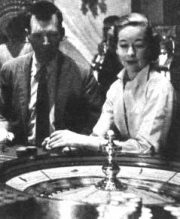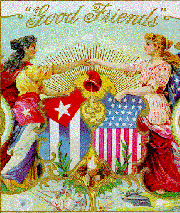Cuban Society, before and after Castro
From The Peopling of NYC
Contents |
Cuba Before Castro
Prior to the Revolution of 1959, under the regime of Batista Cuba had very sharp class divisions. The largest of these classes was the peasant class, most of which could barely support themselves and their families. To contrast the poverty of the lower class was the handful of sugar mill owners, many of who were millionaires. However what had made Cuba different from other Latin American countries was that it always possessed a substantial middle class. The middle class consisted of doctors, lawyers, social workers and various other professionals. Though the culture allowed for some racial equality, a vast number of the poor were people of color, and the poorest of all were women of color.
Hear it for yourself: The History of Cuba
Gambling with Batista
Those who remember Cuba during the regime of Batista remember a tourist paradise. Casinos were prolific, and operated by gangsters who were smart, or lucky enough to escape death and jail during the Capone years in Chicago. In Cuba they were welcomed as legitimate businessmen. Recognizing that a cleaner image attracts customers, they cleaned up their appearance, and enforced a strict no cheating policy in their casinos. Instead of the gun violence characteristic of the Capone years, in Cuba they simply paid of government officials so that they could operate without trouble. These “former” crooks were the best at their game. Few could afford to pay of government officials, handle the operating costs of lavish casinos, pay taxes and still turn a fantastic profit.
As soon as word hit the streets in the US that Cuba was a paradise tourists flocked by the thousands. Upon setting foot in Cuba, the tourist was dazzled by beautiful beaches on which they were allowed a choice of multimillion-dollar resorts. Of course there was also a choice of various vices, including gambling, which was prolific in casinos, hotels, and nightclubs, as well as a flourishing prostitution ring. Americans were able to feel at home in casinos, as most of those who handled the tables were American. Batista encouraged and had the government finance the casinos and various lotteries, as the government and Batista saw a large share of the profits. Batista’s brother in law controlled all 10,000 slot machines in Cuba, as well as all the parking meters. Add to these profits the income from the national lottery, which ran two drawings a day, and you have plenty from which corrupt officials could fill their pockets.
Dealing with the USA
The US greatly profited from its relationship with Cuba, especially during the sugar scarcity of WW11. During the war Cuba didn’t withhold sugar from the US even though it have made millions more selling it to alternate nations on the world market. The price of sugar was fixed unilaterally by the US, as was the quota, which could be changed by the US at any time without Cuba’s consent. This all encouraged Cuba’s heavy dependence on the sugar crop, which would greatly contribute to its economic downfall. Various US corporations also set up shop in Cuba, and with bribes managed to avoid various taxes, while turning large profits, most of which flowed directly to the US. The gangsters who ran the casinos, drug and prostitution rings, also did their share to contribute to the money flow back to the US. Many shared their great profits with their counterparts in the US.
Castro Brings Change
Castro entered power with a will to reform. Under his leadership elite memberships and country clubs disappeared. The government instituted policies that allowed for more equitable salaries, guaranteed housing, nationalized medicine and education, as well as employment for all. This leveled the social and economic hierarchy formed between 1902 and 1958. This did not sit well with the upper and professional classes of Cuba, and many left Cuba in protest. While the greatly lowered wage cap was popular with the poor classes many professionals were unwilling to accept such change, and few sugar mill owners were eager to give up their millions. However some elements of a privileged class remained. Those in the military and government members of the communist party had controlled wages, however they had access to nicer homes, cars and medical care. Castro also made it a priority to eliminate all vices, which he saw as corrupting the people. Thus gambling and prostitution were first to go when he came into power. Cuban Clinic
Interview with an eye-witness
Maybe Change isn’t all that Great
| }
Castro had also made a point to distance, and eventually break ties with the United States. To replace the support provided by the US, Cuba turned to a new ally, the USSR. Regardless of the Soviet Unions support Cuba suffered due to economic mismanagement due to its high dependence upon sugar as a main source of revenue. Another set back came in the 1980s as the USSR began to decline and eventually fall apart. There were major difficulties due to lack of fuel, and various commodities. Often one member of the family would have to dedicate him or herself to providing and locating food, clothing and commodities for the family. Wealth distribution was another issue to contend with. It once again became skewed when the government briefly loosened economic restrictions in the late 1970s and again in 1990s when it introduced small private enterprises and allowed Cubans to posses and spend US dollars. Thus now some Cubans could purchase a wider variety of goods at specials stores that only took dollars. Today Cuba is still dealing with its economical problems, as well as the return of prostitution. However its tourist industry has once again been revived and many 5 star hotels are flourishing, under Hotel Nacional de Cuba government control, to cater to tourists. |



